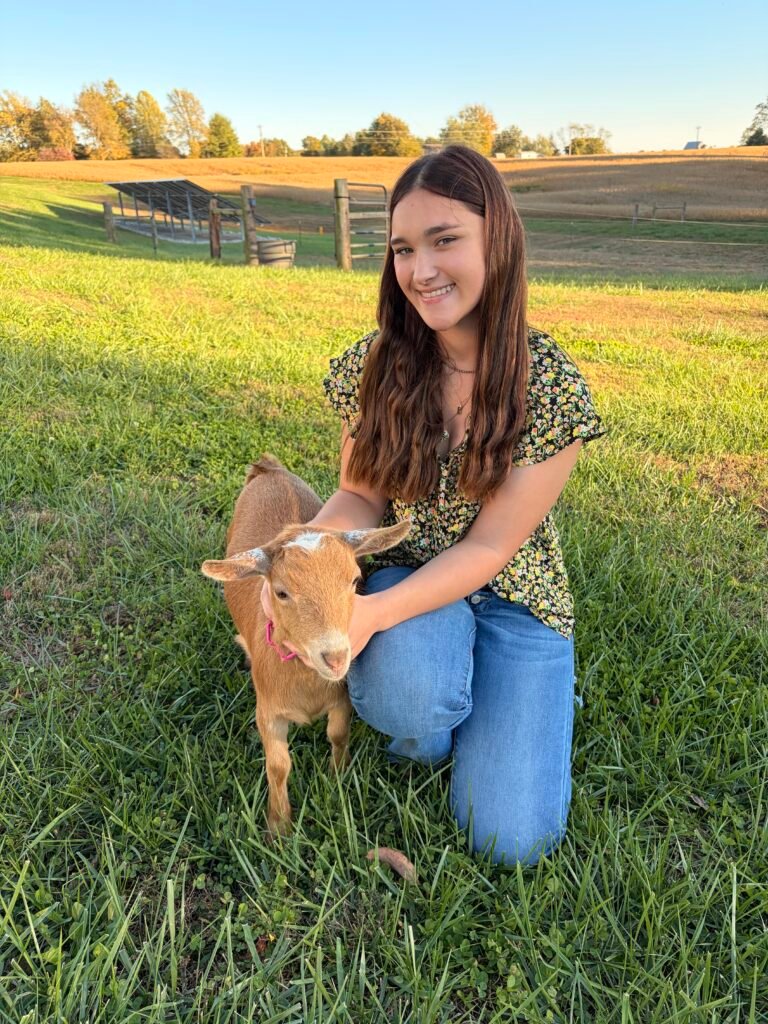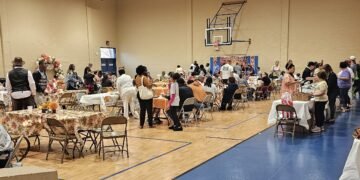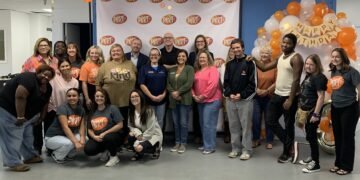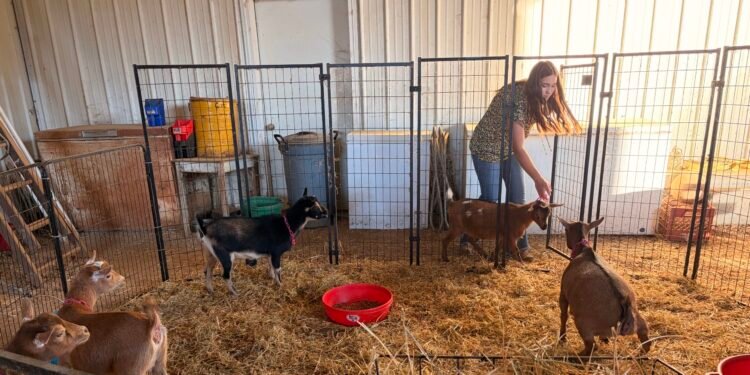Fifteen-year-old Montana Fehd looks to add to the Grand Champion award she won at this year’s Kentucky State Fair
At this year’s North American International Livestock Exposition, which runs through Nov. 20 in Louisville, a Henderson Countian who’s a veteran at livestock shows will be seeking a first at this event:
Winning a national title.
Montana Fehd has been working toward that for about 11 years now, which is pretty eye-opening since she’s only 15 years old.
The NAILE, held at the Kentucky Exposition Center, is the country’s largest all-breed purebred livestock show. Thousands of exhibitors and spectators attend the show.
The teenager said she participated in her very first goat show at the Henderson County Fair when she was just three years old.
This year, to add to the many awards she’s won over the years at livestock shows at all levels, she won Grand Champion Junior Doe Nigerian Dwarf category at the Kentucky State Fair.
The Nigerian Dwarf is Montana’s preferred breed now after starting off with something completely different—the larger Nubian breed.
That breed was a little overpowering for Montana as toddler.
“I was about three years old when I started showing Nubian goats, which are the ones with floppy ears,” she said. “But they were hard to handle for a 3-year-old when it came to showing. Let’s just say, I got run over a few times.”
Soon she was introduced to a family friend’s Nigerian Dwarf dairy goats and “fell in love,” said her mother Heather Fehd, who has raised goats for about a decade and is a leader in Montana’s 4-H program. Montana is president of the 4-H Herdsmen Club.
“We started with a couple of goats in 2014 for the milk, making soap and cheese,” said Heather, adding that it was part of their homesteading pursuit at Cheyenne Acres Farm on Barren Church Road. “And after we went to our first American Dairy Goat Association (ADGA) show, Montana fell in love, and it was like a light switch flipped with her.”
Now the freshman at Haven Christian Academy has her own business raising the goats, even advising other livestock owners on their breeding programs.
She presently has 19 goats and is taking 11 of them to the NAILE show to compete in seven classes. Montana has competed in the show before but has yet to win a national championship there.
“(But) It’s not about the winning,” Montana said, explaining that the best thing about participating in livestock shows is seeing the friends she’s made while showing and spending time with them. “Winning is a bonus.”
Heather said she started learning all she could about the Nigerian breed, and goats in general, not long after Montana was introduced to the show ring at her very young age.
“She just loved it so much,” Heather said, noting that the teen now has a great knack of evaluating the goat kids and knowing which ones are going to be the most valuable both for showing and for growing the herd.
By the time she was 10, she had studied genetics and started her own breeding and was making choices of who stayed or was sold.
“Genetics plays a big part in selling them plus show winnings,” Montana said. “If you have the best goat in the class, then you’re going to win that. Although I have shown at NAILE, I have never won there.”
Montana said she has control over her herd, which can be rambunctious and mischievous. No longer is she overrun by the animals as she was as a 3-year-old.
“My goats are scared of me,” she said. “My goats know I’m the boss.”
She also described the appeal of pursuing all the hard work required to take care of them, feed them, milk them and prepare for showing.
“There’s just something about goats,” Montana said. “Goats are hard-headed and determined like me.”

According to information provided by Kentucky Farm Bureau, dairy goats also have a long history in this country. According to information from the American Dairy Goat Association (ADGA), milking goats were brought to the United States by settlers both at Jamestown and at Plymouth Rock.
Spanish mission settlements had already distributed milking goats throughout the Southwest and California during the 16th century. These animals were not of a distinct breed type, and descendants became known as common American milking goats. A USDA census in 1900 estimated them to number some 1.2 million. At that time, this goat population was the largest in the rural south and southwest.
Those numbers are vastly different today. According to information from the USDA National Agricultural Statistics Service, as of 2022, there were 410,000 dairy goats in the country, representing 16 percent of the total goat population.
However, the dairy goat numbers in Kentucky have seen an increase over the past year, according to Kelley Yates, Executive Director of the Kentucky Sheep and Goat Development Office.
“Kentucky is home to over 5,800 dairy goats, a 9.4 percent increase since 2024, ranking our state 23rd in milk goat inventory,” she said.
Heather said Cheyenne Acres is a family operation.
“My husband David and I pitch in on a daily basis with the care and upkeep of the goats, but Montana does the breeding schedule, selling of kids, training each goat, and the showing,” she said. “This is a year-round operation. And during the months of February until November, it’s milking twice a day for every doe, seven days a week. This takes a lot of dedication, especially for a young 15-year-old girl.”

























